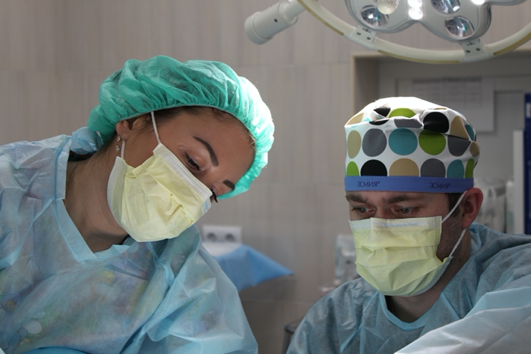Are vasectomy and urology related? Due to the great medical advancements, contraceptive measures are now widely accessible and easy for people. Most people like to opt for temporary measures such as condoms and birth control pills. Unlike most contraception, a vasectomy is a permanent surgical method that prevents pregnancy.
Vasectomy
In a vasectomy, a person goes through a minor operation. After the procedure, you become unable to get your partner pregnant because of the few surgically induced changes inside your body. With a vasectomy, you can successfully block your semen from exiting your body when you ejaculate. As a result, pregnancy becomes impossible despite orgasms and ejaculation.
Furthermore, the procedure itself is a routine operation that usually does not last more than 30 minutes. Another name for this procedure is male sterilization. Doctors use two methods to perform a vasectomy. The first and most common one is the conventional vasectomy, and the second is the no-scalpel vasectomy.
The Procedural Workings
The male testicles are the organs that produce sperm cells. Sperm cells are responsible for reproduction since they start the fertilization process inside a female’s ovaries. Thus, sperm leaves the testicles and enters into the penis in time of ejaculation. Moreover, the sperm collects in a coiled tube called the epididymis. This coiled tube joins the ejaculatory duct with the help of a long tube; the medical term for this tube is vas deferens or vas. Therefore, vasectomy is a surgical procedure that has to do with the operation of the vas deferens.
Vas deferens travel from the scrotum to the inguinal canal area, and then to the pelvis, joining the seminal vesicle. In an overview, the vas deferens forms the ejaculatory duct. During the ejaculation process, the sperm flows to the seminal vesicles and infuses with semen before exiting out from the penis. The sperms infusion with semen makes it capable of fertilization. Therefore, a vasectomy aims to surgically cut the vas deferens to prevent the flow of the sperm. By doing so, you can orgasm without having to worry about ejaculation or accidental pregnancy.
Types of Vasectomies
Doctors use two different methods when performing a vasectomy. The first encompasses the conventional method, while the other includes the no-scalpel vasectomy.
Conventional Vasectomy
In this operation, the doctor performs the surgery by making small incisions in your scrotum so that they can access the internal tubes or Vas deferens. Once the vas deferens are visible, the doctors cut them so that there is a gap between them. The doctor then ties the two ends of the separated tube with stitches to block the entrance and exit of sperm cells. After stitching the vas deferens, the doctor closes the scrotum incisions using dissolving stitches and makes you completely incapable of impregnating your partner.
No-Scalpel Vasectomy
This follows the same procedural protocols, except the doctor does not make any incisions using a scalpel. Instead, the doctor gets a feel for the vas deferens tube by external examination of the scrotum. As soon as the doctor determines the location of the tubes, they use a clamp to keep them in place. The following procedure allows doctors to make small holes on the surface of your scrotum. The doctors then stretch the holes so that they can pull the vas deferens out, cut it, and seal it using stitches or sears. In comparison to conventional vasectomy, this procedure is minimally invasive; however, it is more or less the same.
Benefits of Vasectomy
In terms of efficacy, vasectomies are the most reliable measures of birth control, amongst others. Moreover, male sterilization is much more inexpensive than female sterilization. Not only is it cheaper, but the surgical procedure is less time-consuming and includes minimal risks and no complications. Furthermore, vasectomy has no lasting effects on your testosterone. This means you do not have to worry about any decreases in your sex drive or sexual performance.
Recovery
The recovery period after a vasectomy does not usually last too long. Doctors usually advise a day’s rest after the procedure. However, you should avoid any activities that put a strain on your groin for at least a week. This is because the stitches are still in recovery mode, and injury or excessive stress can cause damage and complications. In case of swelling, you can always use the help of ice packs. Some people even resort to wearing a jockstrap for support.
Before you can indulge in sexual activity, you need to make sure that your semen is free of any sperm. For this reason, you will have to go through at least ten ejaculations and get your semen tested for traces of sperm. If your semen contains a few sperm cells, you need to take the test again.
Urology: Vasectomy Conclusion
A vasectomy is a safe and simple surgical contraceptive measure. It rids you of the worries of accidental impregnations and temporary contraception. However, you must seek a good urologist, like Doctor Yaniv Larish from Fifth Avenue Urology. Contact us for a safe, secure, and professional procedure.
Call to schedule an appointment 212-675-3186 or visit our main website.


